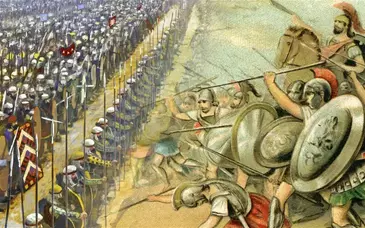Polybolos - an ancient Greek repeating ballista
Polybolos was an ancient Greek repeating ballista reputedly invented by Dionysius of Alexandria, a 3rd century BC Greek engineer at the Rhodes arsenal and used in antiquity. Philo of Byzantium encountered and described the polybolos, a catapult that like a modern machine gun could fire again and again without a need to reload. Philo left a detailed description of the gears that powered its chain drive, the oldest known application of such a mechanism, and that placed bolt after bolt into its firing slot. No archeological evidence has yet been found that would authenticate later accounts of its use.

The polybolos would have differed from an ordinary ballista in that it had a wooden magazine over the mensa (the cradle that holds the bolt prior to firing) capable of holding several dozen bolts. The mechanism is unique in that it is driven by a flat-link chain connected to a windlass; the flat-link chain is an invention more often attributed to Leonardo da Vinci.
When loading a new bolt, the windlass is rotated counter-clockwise with the trigger claw raised; this drives the mensa forward towards the bow string, where a metal lug pushes the trigger under the trigger claw, which is closed over the string.
Once the string is locked into the trigger mechanism, the windlass is then rotated clockwise, drawing the mensa back, drawing the bow string with it.
A round wooden pole in the bottom of the magazine is rotated down toward the mensa as it is drawn to the back of the polybolos, dropping a single bolt into the tray, ready to be fired. As the mensa is pulled farther back, it meets another lug like the one that locked the string into position, this one pushes the trigger and automatically fires the polybolos, and the process is repeated. The repetition provides the weapon's name, in Greek "πολυβόλος", "throwing many missiles", from "πολύς" (polys), "multiple, many" and -βόλος - -bolos "thrower", in turn from "βάλλω" (ballo), "to throw, to hurl", literally a repeating weapon.
In 2010 a reconstruction was built by the crew of MythBusters, who concluded that it was a plausible weapon.



